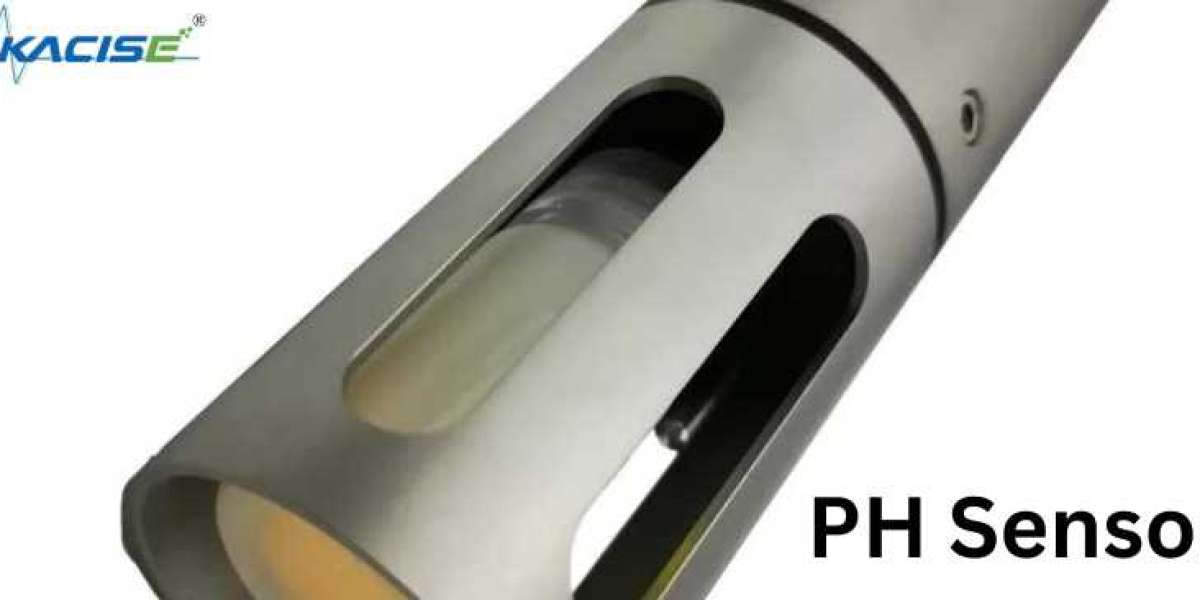This blog post will explore the principles behind pH sensors, their construction, and how they function to measure acidity and alkalinity in solutions.
What is a pH Sensor?
A pH sensor, often referred to as a pH probe, is an instrument designed to measure the acidity or alkalinity of a solution. The pH scale ranges from 0 to 14, where a pH of 7 is considered neutral, values below 7 indicate acidity, and values above 7 indicate alkalinity. Accurate pH measurements are essential for numerous applications, such as water quality monitoring, soil analysis, and chemical processing.
Components of a pH Sensor
A typical pH sensor comprises two main components: the glass electrode and the reference electrode.
Glass Electrode: The glass electrode is sensitive to hydrogen ions (H⁺) and consists of a thin glass membrane. When immersed in a solution, this membrane allows H⁺ ions to pass through, creating a potential difference across the membrane. This potential difference is directly related to the concentration of H⁺ ions in the solution, allowing for the measurement of pH.
Reference Electrode: The reference electrode provides a stable reference point against which the glass electrode's voltage can be compared. It typically contains a known concentration of ions, often through a saturated potassium chloride solution, ensuring stable readings.
How Does a pH Sensor Work?
The working principle of a pH sensor revolves around the Nernst equation, which describes the relationship between the concentration of ions in a solution and the voltage produced by the electrode. When the glass electrode is placed in a solution, H⁺ ions interact with the glass membrane, generating a potential difference. The reference electrode simultaneously produces a stable voltage.
The pH meter reads this potential difference and converts it into a pH value using the Nernst equation. The equation indicates that for every tenfold change in H⁺ ion concentration, there is a corresponding change of approximately 59.16 mV in voltage at room temperature. By calibrating the sensor with solutions of known pH, accurate readings can be obtained.
Calibration and Maintenance
To ensure accurate pH measurements, regular calibration is necessary. This process involves immersing the sensor in standard buffer solutions with known pH values. By adjusting the meter to match these values, the sensor can provide reliable readings. Additionally, proper maintenance is crucial, as glass electrodes can be sensitive to contamination and physical damage. Regular cleaning and proper storage can prolong the sensor's lifespan and maintain accuracy.
Applications of pH Sensors
pH sensors are used in various applications, including:
- Environmental Monitoring: They help assess water quality in rivers, lakes, and aquifers, crucial for ecological health.
- Agriculture: pH sensors aid in soil testing, helping farmers optimize crop yields by ensuring the right soil conditions.
- Food and Beverage Industry: They are essential for quality control, ensuring that products meet safety and taste standards.
- Pharmaceuticals: pH sensors are used in drug formulation and quality control, ensuring the stability and effectiveness of products.
Conclusion
pH sensors are indispensable tools in many fields, providing critical data that influence various processes and decisions. By understanding how these sensors work, their construction, and their applications, we can appreciate their role in maintaining quality and safety across multiple industries. With advancements in technology, pH sensors continue to evolve, promising even more precise and efficient measurements in the future.







